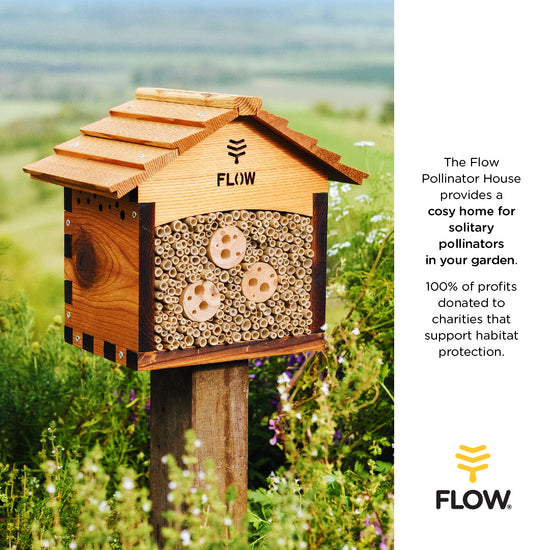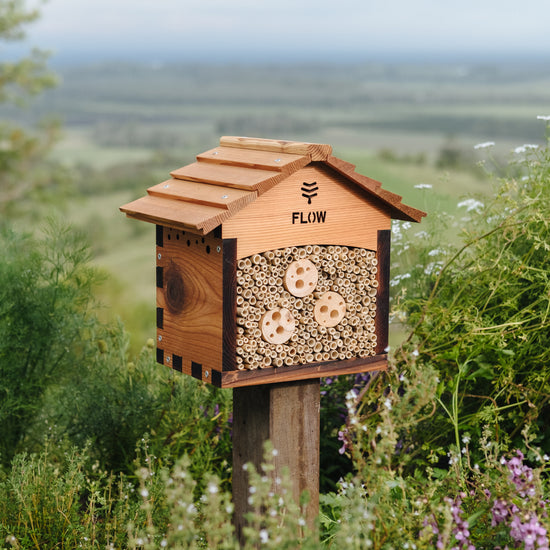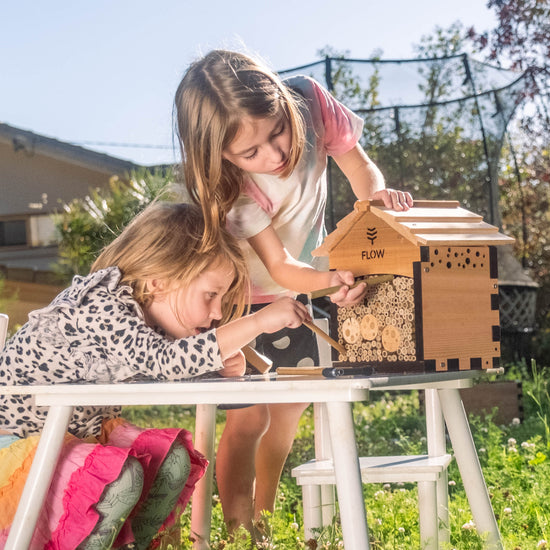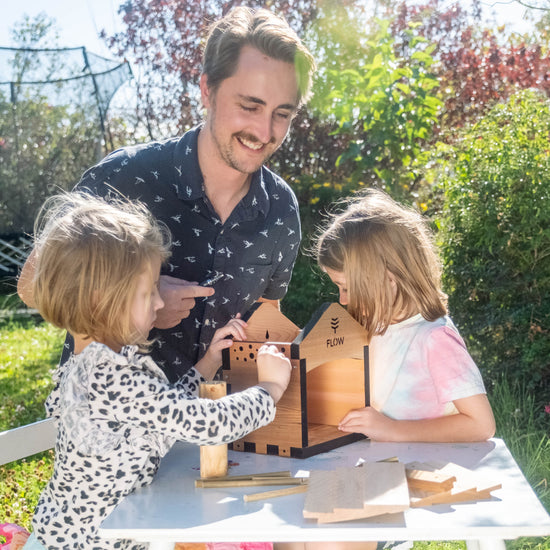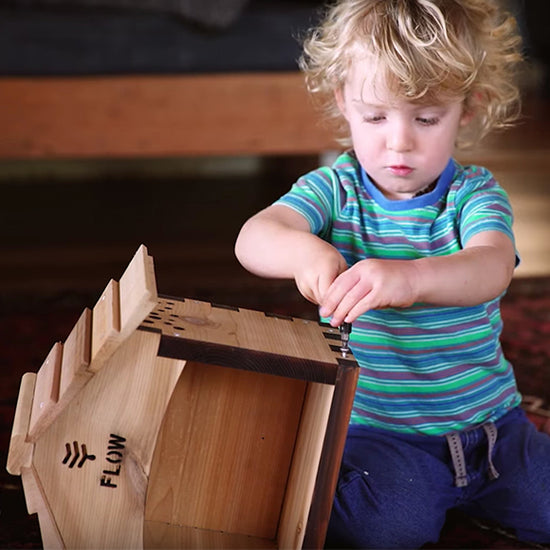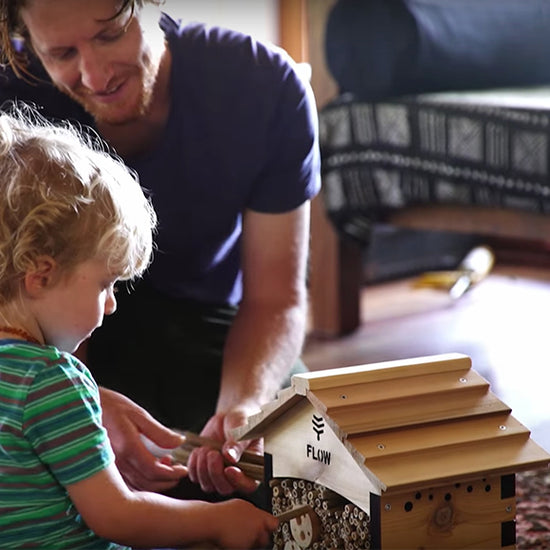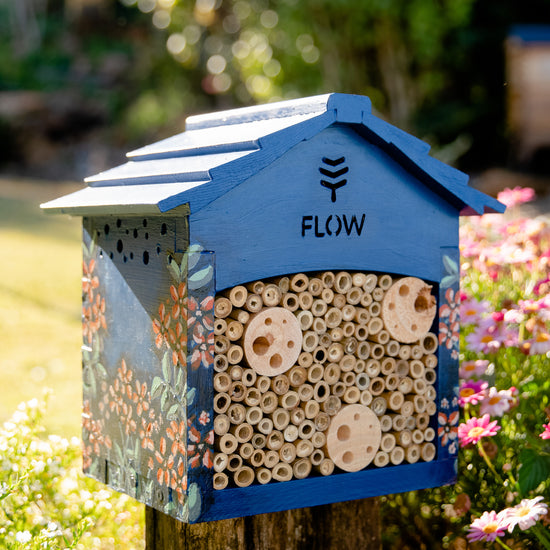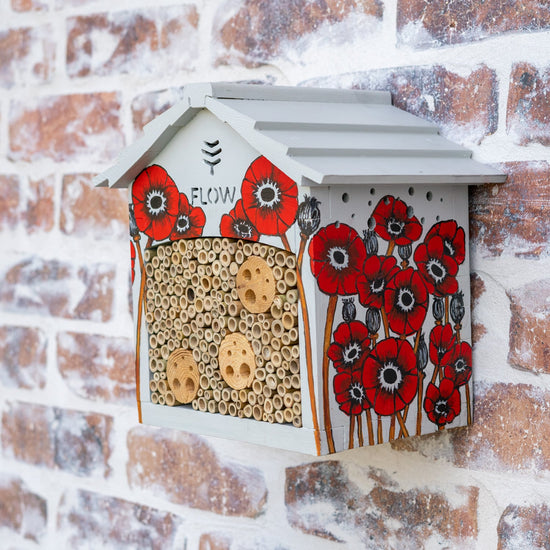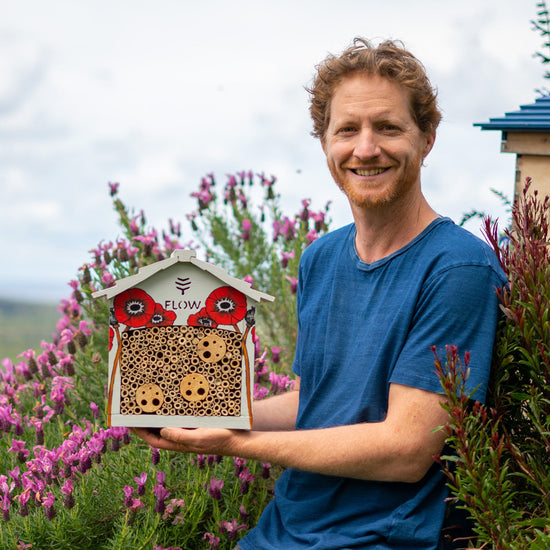Your Cart is Empty
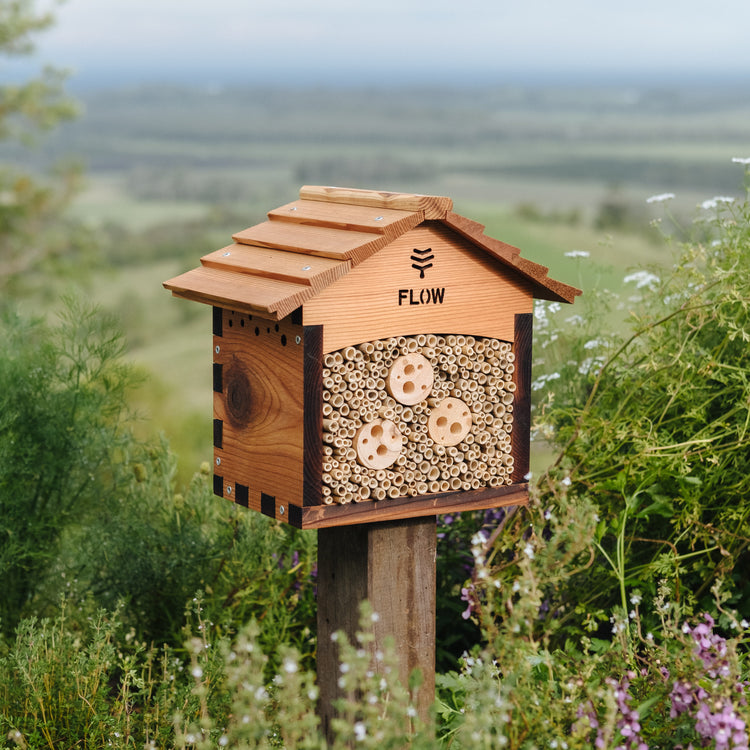
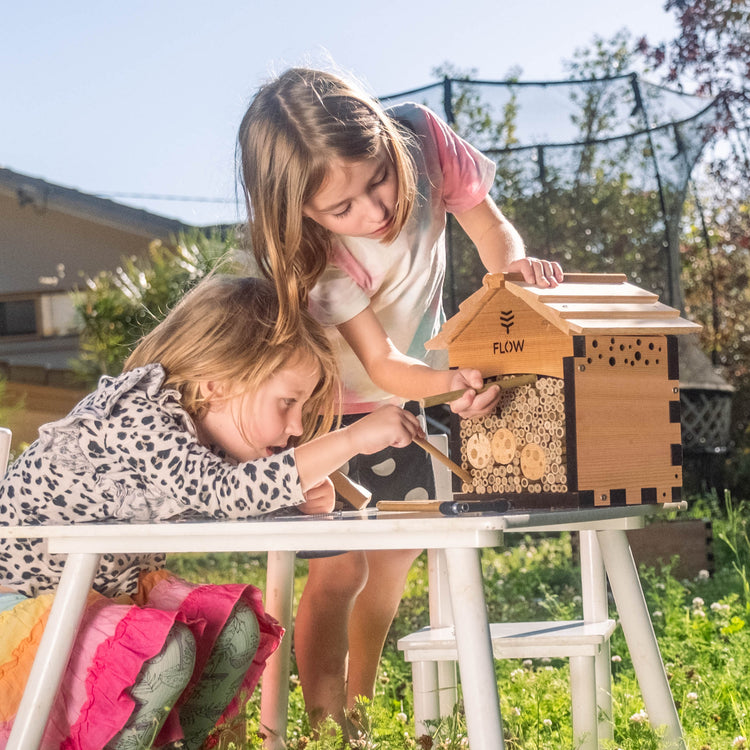
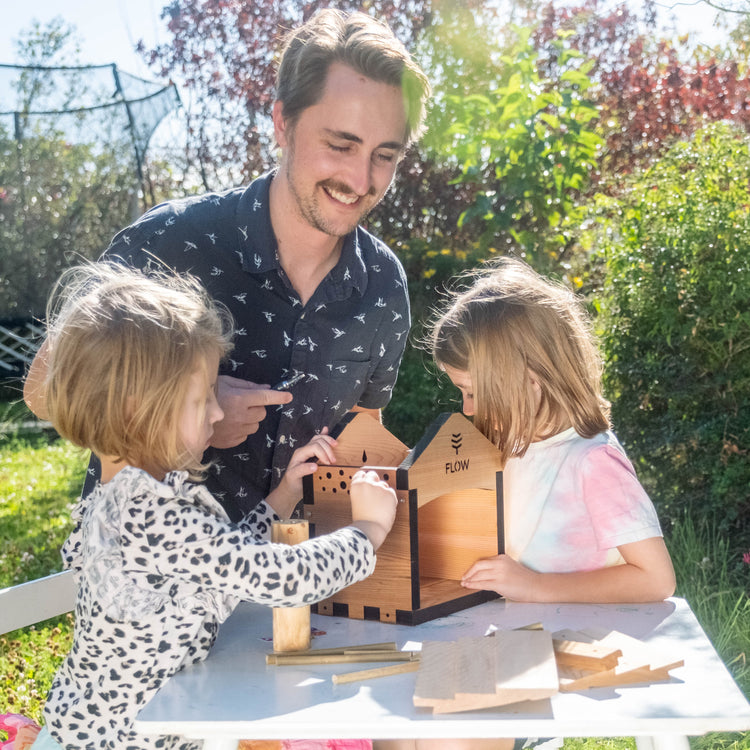
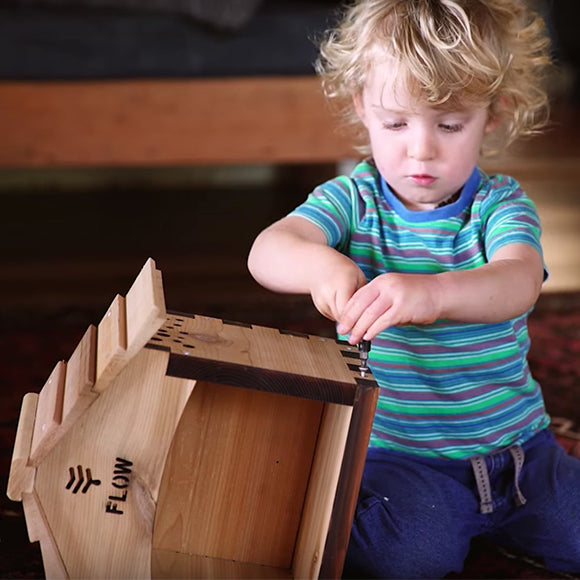
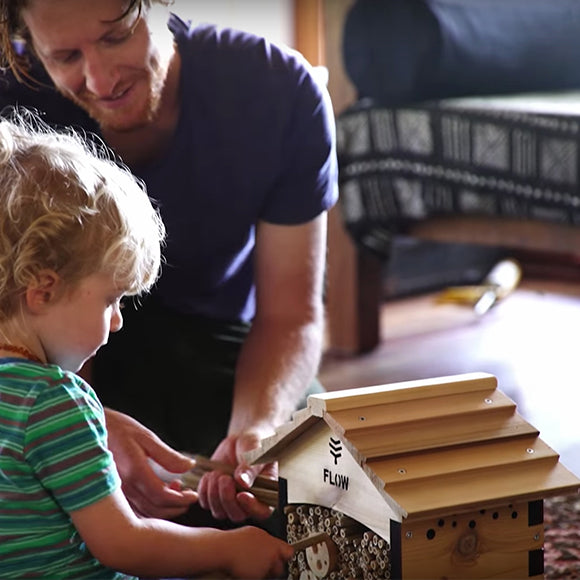
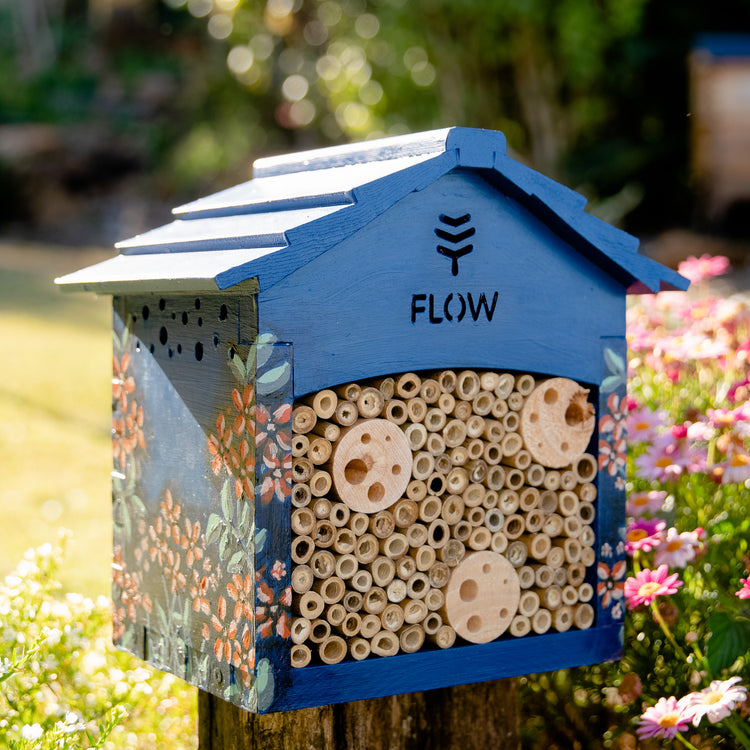
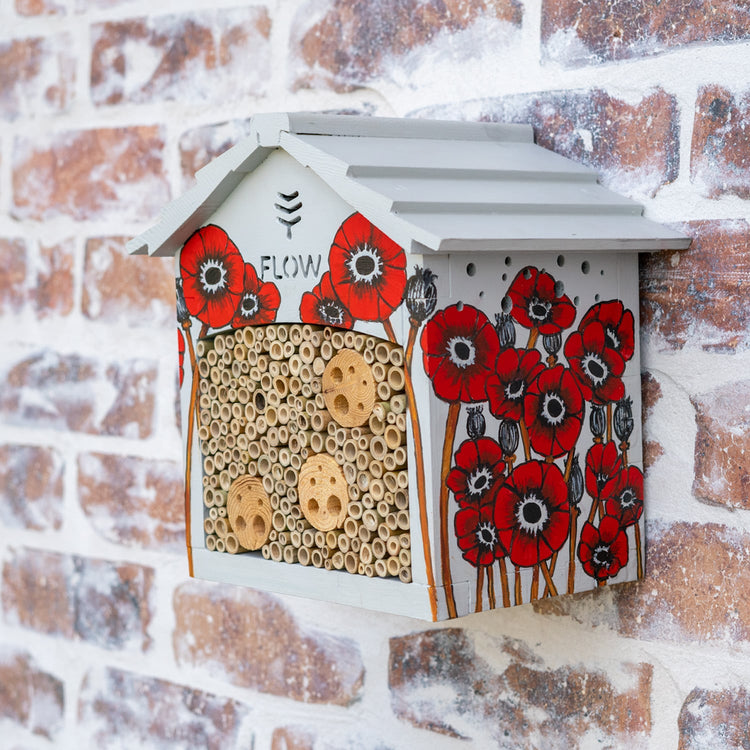
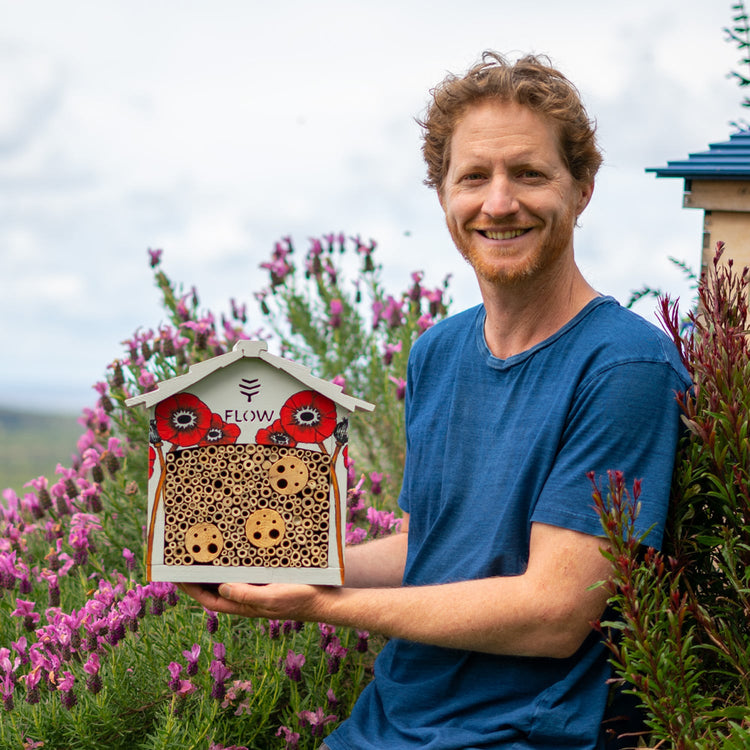
Flow Pollinator House
A cosy home for native solitary nesting bees
$79
Upcycled western red cedar wood
Sustainably made in Australia
PRODUCT DESCRIPTION
The Flow Pollinator House is designed to house native solitary nesting bees and to help create pollinator corridors between our wild spaces for habitats affected by land clearing and urbanisation.
At Flow, we try to minimise waste wherever possible – these beautiful western red cedar Pollinator Houses have been created using salvaged Flow Hive 2+ timber offcuts and sustainably sourced bamboo. Each house is unique – you may even find a Flow Hive handle or brand on yours. By reducing waste, we lessen our impact on the environment, which is also good news for pollinators.
The perfect gift for garden enthusiasts or passionate pollinator protectors.
What's included:
- Pollinator house (flat packed)
- Assembly tool
- Bamboo inserts
- Wooden rods with drilled holes
- Eco ceramic coated screws
Important notes
- Shipped flat-packed for easy assembly.
- Roof requires painting to protect against the weather.
- Does not include bees.
- Does not include our patented Flow Frame technology.
- This hive (bee hotel) is exclusively for the habitat of native solitary nesting bees, not for harvesting honey.
BUNDLE AND SAVE
Garden Bundle - Save $20
Help create beautiful garden forage for the bees with our premium Flow Garden Tools and provide a cosy home for solitary nesting bees with the Flow Pollinator House.
Pollinator's Bundle - Save $30
In addition to the Flow Garden Tools is one choice from our bee book library to learn more about the bees you can spot in your yard.
CARE GUIDE
All images are for illustrative purposes – actual product may vary slightly.
The Flow Pollinator House is made from salvaged timber hive panels which means each house will be unique.
Manufactured in upcycled western red cedar – once assembled, apply two coats of good quality outdoor paint to the roof to provide longevity against the elements.
Your Flow Pollinator House will require maintenance to ensure that it is safe and habitable for solitary nesting visitors. Maintenance required will be dependent on local conditions.
Bamboo inserts need to be monitored for pests and to reduce the risk of spreading diseases. It's good practice to replace these tubes every second year to limit the buildup of pathogens and fungus. Read more here.
SAFETY
Solitary bees are generally harmless and non-aggressive. Some insects do sting, so it’s best to exercise caution when handling your pollinator house.
SHIPPING INFO
Dispatch times below:
Flow Pollinator House: Dispatches in 1-2 working daysAn introduction to the world of pollinators
The perfect gift
A Flow Pollinator House is a great introduction to the fascinating world of bees and pollinators. Together through planting flowers and building flourishing gardens, they’ll learn the importance of supporting our tiny environmental champions by increasing pollinator habitat around their neighbourhood.
Funding amazing projects around the world
100% of profits donated
This cosy home is designed to raise awareness about the importance of protecting these incredible creatures, who are essential to life on earth.
The best news is, 100% of profits from this product are donated to support pollinator advocacy, protection and education.
Our customers love the Flow Pollinator House
Important notes
- Shipped flat-packed for easy assembly.
- Roof requires painting to protect against the weather.
- Your bamboo inserts come in myriad shapes and sizes. Have some fun assembling them in your own unique way!
- Does not include bees.
- Does not include our patented Flow Frame technology.
- This hive (bee hotel) is exclusively for the habitat of native solitary nesting bees, not for harvesting honey.
Your questions answered
-
The Flow Pollinator House provides space for and encourages differing pollinator species to take up residence in your garden.
Unlike European honey bees, the majority of bee species worldwide are actually solitary nesters who require and seek out a cosy home to nest in.
Different types of pollinators require different types of homes. Cavity-nesting bees use hollow plant stems or holes in wood for laying their eggs. These solitary bees do not have queens or workers, nor do they store any honey in their tiny nests. In addition to nesting, some species like to hibernate over winter and are on the lookout for sheltered spaces with plant matter as insulation.
Our Flow Pollinator House aims to replicate these ideal nesting conditions for the dual purpose of supporting these incredible insects whilst your garden reaps the rewards of their residence.
Not all species nest in a pollinator house like this. There are plenty of other ways you can help support solitary nesters, such as making holes in mud for the blue-banded bee, or drilling holes in wood. You can go to town creating pollinator zones in your garden. Find some great tips for creating your own pollinator house here.
-
Finding an area which is bathed in gentle sunlight (which solitary bees love) and is protected from prevailing winds, tall weeds and other animals is ideal. Optimally the house should be facing between the north and east in the Southern Hemisphere, and between south and west in the Northern Hemisphere, in a position which doesn’t get too hot, and is 1 metre off the ground but no higher than 2 metres.
Add your own unique home renovations such as dried leaves, grass or crumpled cardboard to the roof of your Flow Pollinator House to further diversify its appeal to different species. Selecting a position which is already attracting insects, either a garden bed with flowers, a pond or an area with some trees will help to encourage vacancies in your pollinator house to fill up quickly.
Don’t forget to provide access to plenty of forage and water for your pollinators.
-
Our Flow Pollinator House was developed out of a desire to find a way to repurpose our Flow Hive offcuts and unused wooden panels, whilst at the same time creating a habitat for these important little pollinators.
Crafted from sustainably sourced western red cedar, the Pollinator House has been manufactured using precision laser cutting from salvaging timber panels and offcuts from the production of our Flow Hive 2+.
Don't be surprised if you find a handle or Flow logo on the timber panels – we love the uniqueness this adds to each individual house.
Bamboo inserts have been sustainably sourced, making for deluxe pollinator suites.
-
There is so much we can do to support pollinators! Here are some great tips for creating a bee-friendly garden mindfully:
Avoid pesticides. Companion planting is the way to go if you want to control pests. Pesticides are one of the reasons bee populations are in decline.
If you have room, plant flowering plants in bountiful clumps so bees don’t have to search far for forage and can work more efficiently.
Plant several species to ensure you have forage for every season.
Maintain multiple water sources around your garden.
Spread the word among your neighbours, family and friends, the more people you can encourage to look after your neighbourhood the greater your impact will be collectively.
Check out our Bee-Friendly Gardening fact sheet for more information about gardening mindfully for pollinators.

A company that gives back

Protecting pollinator habitat

Exceeding social and environmental standards


